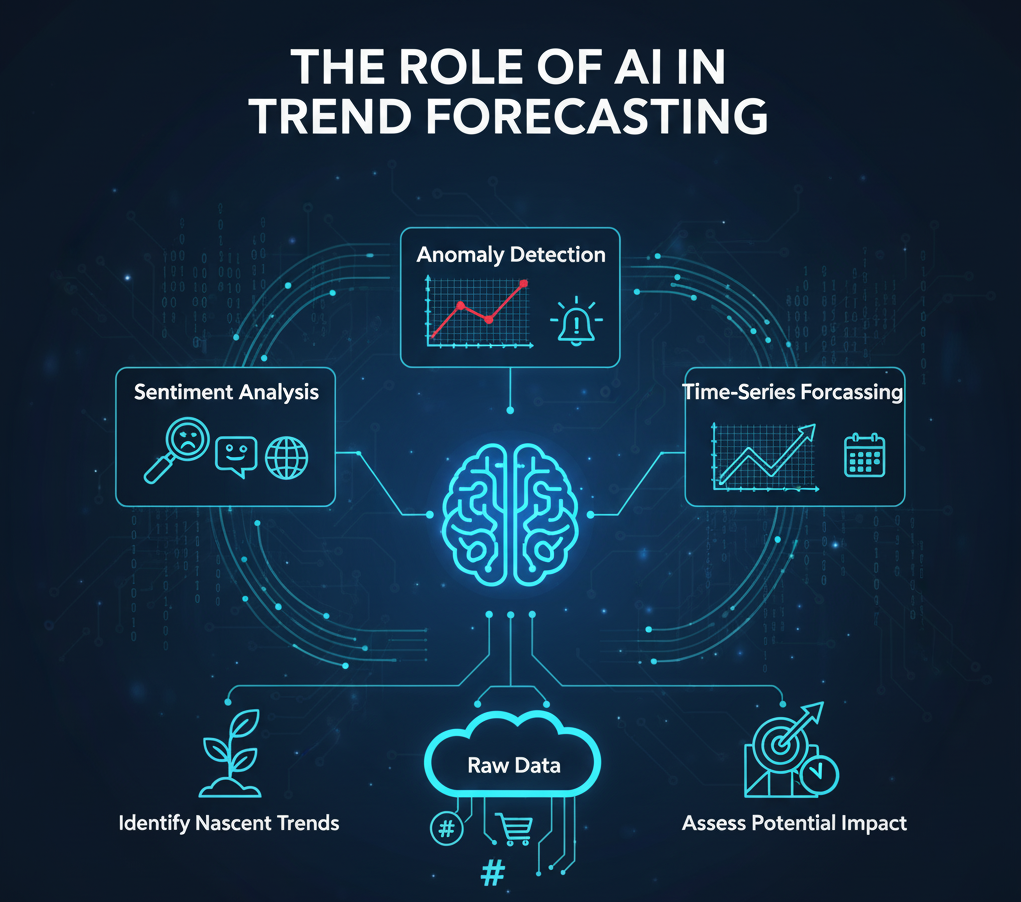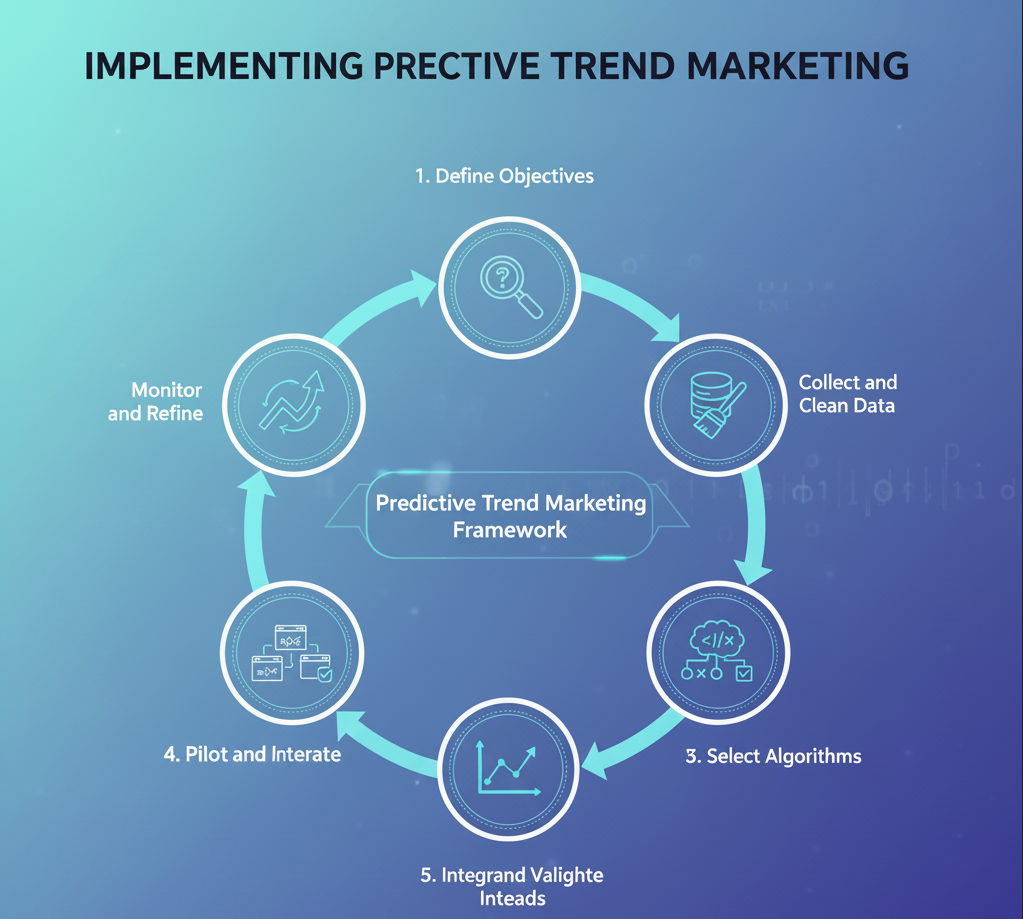
In today’s fast-paced digital landscape, brands that anticipate market shifts gain a critical edge. Predictive trend marketing uses advanced data analytics and artificial intelligence to forecast emerging consumer behaviors before they hit the mainstream. By moving from reactive to proactive strategies, companies can tailor campaigns, product launches, and messaging to ride the wave of the next big trend. In this comprehensive guide, we explore how to harness AI for trend forecasting, the tools and data sources you need, and best practices to ensure your predictive marketing initiatives deliver measurable growth.
What Is Predictive Trend Marketing?
Predictive trend marketing combines trend analysis with predictive analytics to identify patterns in consumer data that signal upcoming market shifts. Unlike traditional trend marketing, which responds to visible cultural or social phenomena, predictive approaches anticipate changes by analyzing large datasets, social media conversations, search behavior, purchase histories, and more. The goal is to forecast trends weeks or months in advance, enabling brands to align product development, content creation, and promotional calendars with emerging consumer preferences.
The Role of AI in Trend Forecasting

Artificial intelligence transforms raw data into actionable insights through machine learning algorithms and natural language processing. AI models can sift through millions of data points—from social media hashtags to e-commerce transactions—to detect subtle signals that humans might miss. Key AI capabilities include sentiment analysis, anomaly detection, and time-series forecasting. These tools help marketers identify nascent trends, predict their growth trajectory, and assess potential impact on specific demographics or regions.
Essential Data Sources and Tools
To build an effective predictive trend marketing strategy, you’ll need access to diverse data streams and analytics platforms. Consider the following sources and tools:
- Social Listening Platforms: Monitor brand mentions, hashtags, and sentiment across networks like Twitter, Instagram, and TikTok.
- Search Analytics: Use Google Trends and keyword research tools to spot rising search queries.
- Customer Data: Leverage CRM and purchase histories to track evolving buyer behavior.
- AI & ML Frameworks: Employ platforms such as TensorFlow, PyTorch, or cloud services from AWS, Google Cloud, and Azure for building forecasting models.
- Market Research Databases: Subscribe to industry reports and syndicated data for macroeconomic indicators.
Implementing Predictive Trend Marketing

Follow these steps to integrate predictive trend marketing into your organization:
- Define Objectives: Clarify whether you aim to optimize content calendars, guide product innovation, or refine targeting strategies.
- Collect and Clean Data: Aggregate data from chosen sources and ensure it is formatted consistently for analysis.
- Select Algorithms: Choose machine learning models suited for time-series forecasting, clustering, or classification tasks.
- Train and Validate: Use historical data to train your models, then validate against known trend cycles to gauge accuracy.
- Integrate Insights: Feed real-time forecasts into your marketing automation, content management, or product planning tools.
- Monitor and Refine: Continuously track model performance and update algorithms as consumer behaviors evolve.
Real-World Case Studies
To illustrate the power of predictive trend marketing, let’s examine two examples:
- Fashion Retailer: A global apparel brand used AI-driven social listening to detect early interest in upcycled fabrics. Six months before competitors, they launched an eco-friendly line that captured 30 percent of millennial shoppers and boosted revenue by 15 percent.
- FMCG Company: A beverage maker analyzed search trends and grocery data to forecast a shift toward functional beverages with adaptogens. Their timely product rollout achieved a top-five market share in the new category within months.
Best Practices for Success
Adopt these best practices to maximize the ROI of your predictive trend marketing efforts:
- Cross-Functional Collaboration: Involve stakeholders from marketing, R&D, sales, and IT to ensure insights translate into action.
- Scalable Infrastructure: Use cloud-based platforms and APIs to handle large data volumes without performance bottlenecks.
- Ethical Data Handling: Respect privacy regulations and obtain consent before ingesting consumer data.
- Feedback Loops: Capture campaign performance metrics and feed them back into your models for continuous improvement.
- Actionable Dashboards: Provide marketing teams with intuitive visualizations and alerts for emerging trends.
Overcoming Common Challenges
Predictive trend marketing isn’t without hurdles. Data silos, model drift, and false positives can undermine efforts. To overcome these issues:
- Break Down Silos: Establish a centralized data warehouse to ensure cross-departmental visibility.
- Regular Model Audits: Schedule periodic reviews to recalibrate algorithms and eliminate bias.
- Threshold Tuning: Set confidence thresholds to reduce noise and focus on high-probability trend signals.
- Scenario Planning: Develop contingency plans for trends that underperform or shift unexpectedly.
Future Outlook and Conclusion
As AI and data analytics continue to advance, predictive trend marketing will become even more precise and accessible. Augmented intelligence tools will enable marketers to blend human creativity with machine-driven insights, leading to hyper-personalized campaigns that resonate on a global scale. Brands that invest in these capabilities now will outpace competitors and forge deeper connections with consumers. Embrace predictive trend marketing today to stay ahead of the curve, drive sustainable growth, and transform your business into a trendsetter rather than a follower.
Learn more about: Why Traditional Business Models Still Drive Success










Leave a Reply